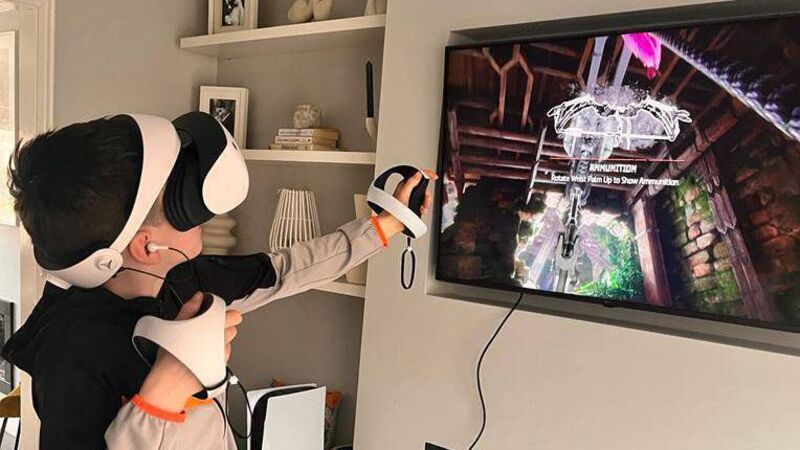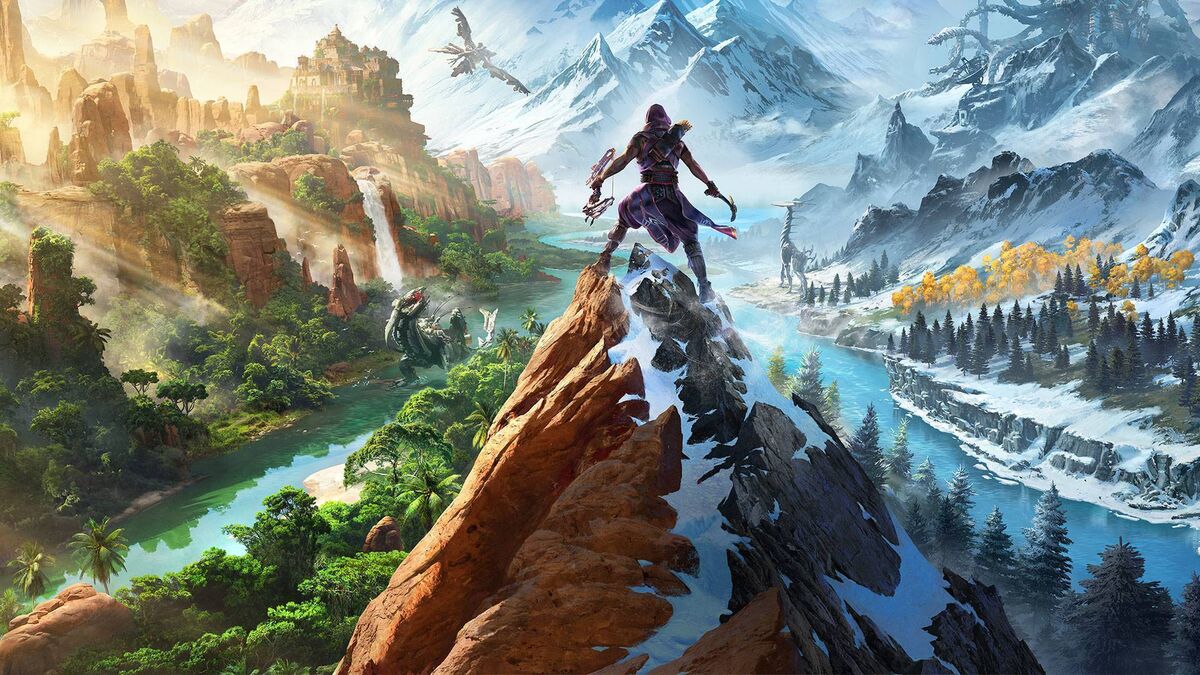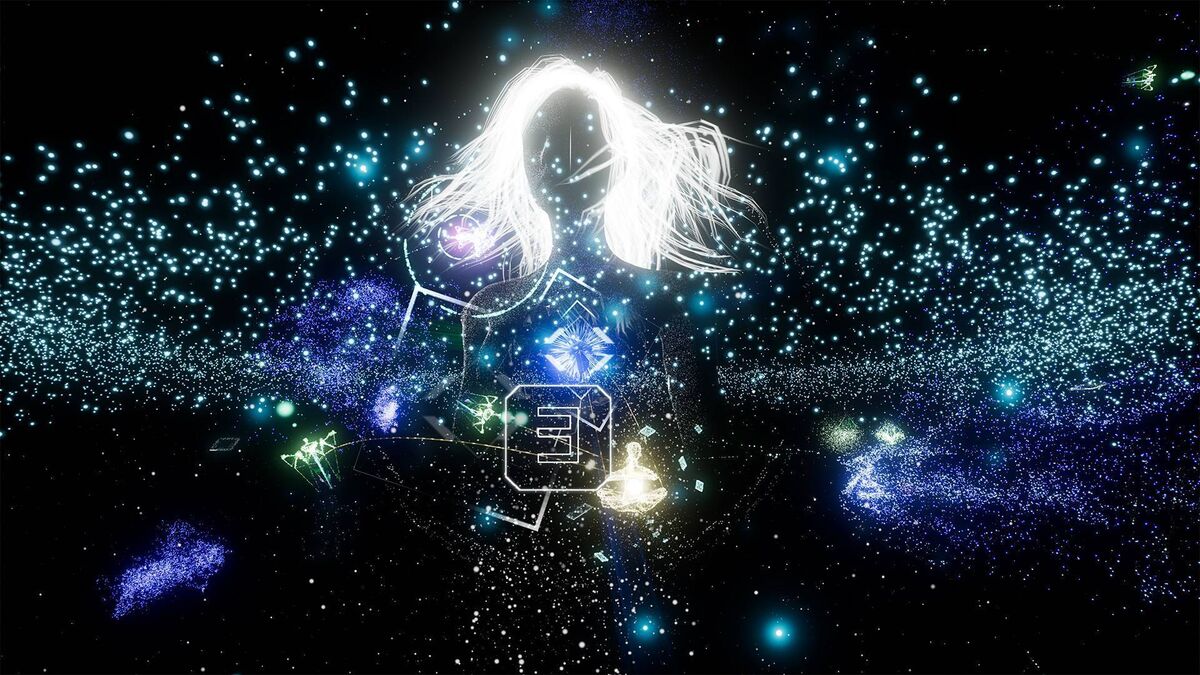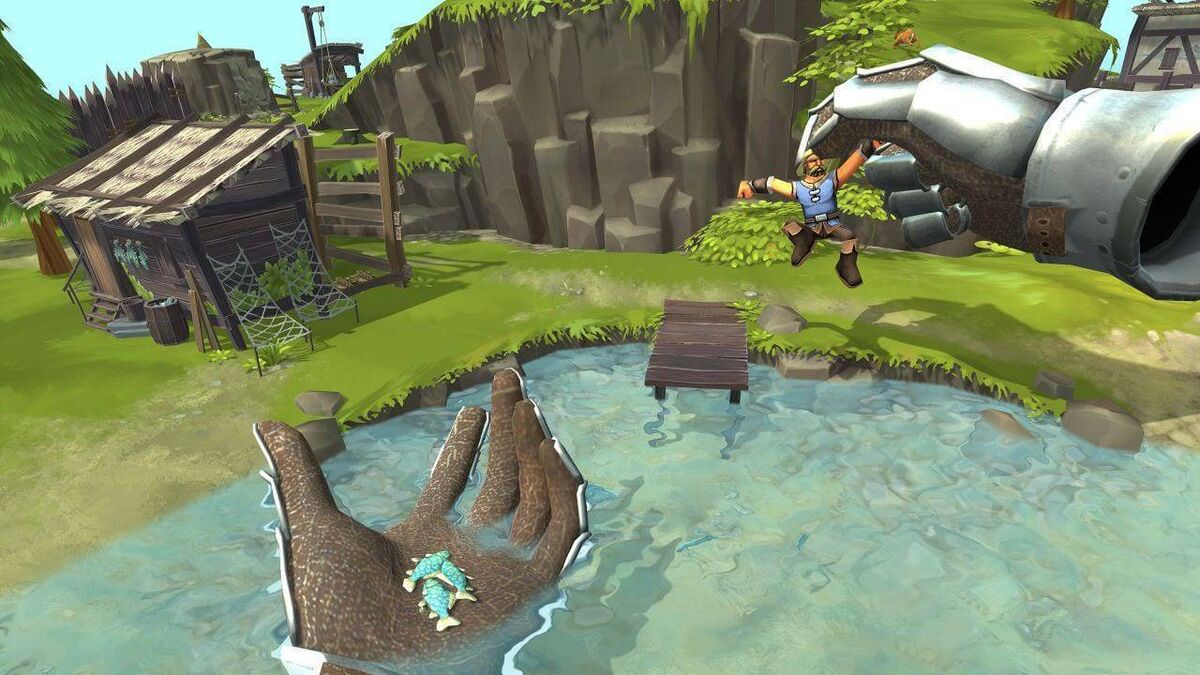PlayStation VR2 review: We test the new PS virtual reality headset

Michael Parkin, 11, from Mallow, Co Cork, playing the PlayStation VR2.
To learn, some might say, is to see something through another’s eyes. The eyes of an escaped convict. The eyes of a benevolent deity. The eyes of a child as it escapes to another world.
With the launch of the PlayStation VR 2, this writer was able to witness all those things, and more – some experiences more surprising than expected.
The original intention was to test Sony’s new generation virtual reality headset alone. The focus would be on the exciting hardware – that only one wire was needed for connection; the much improved resolution for sharper images; the fantastic new controllers that were designed for virtual gameplay.
Instead, what transpired was a weekend spent marvelling at the reaction of nieces and nephew as they experienced virtual reality for themselves. From the first gasps and ‘wows’ muttered, to the eventual declarations of “I love it!!” and, amusingly, the youngest declaring: “The real world is boring now.” That’s not to say Sony’s PSVR 2 is without its problems. At about €600, it is very expensive in a challenging economic landscape. Virtual reality remains extremely reliant on good programming and simple gameplay to be effective. Everyone experienced some form of motion sickness or discomfort at some point.
Despite all that, people kept coming back for more and more, and the abiding memory is fun and wonder. So, what were the games that drove this weekend of virtual insanity?
This is Sony’s launch title for the PSVR2, set in their excellent florapocalyptic universe of Horizon: Zero Dawn and Forbidden West. Simply put, it throws everything at the headset, from spectacular visuals to intricate use of the new controllers. Of the 5 games we tested, this drew the biggest initial gasps, with a landscape of lush jungle, flowing water, and the giant techno-creatures Horizon made famous. It’s spectacular looking.

As the game progresses, the mechanics and world become surprisingly complex, and after 2-3 hours we were shooting down enemies with arrows, using hooks to scale impossible cliffs, and solving traditional cog puzzles with intuitive controls.
Call of the Mountain is the ‘showpiece’ game for PSVR2 and guaranteed to draw wonder from most people initially – but it’s also ultimately an action game that will resonate most with traditional gamers.

If you want something a little different and a little more psychedelic, then Rez: Infinite is the masterpiece you seek. First released 20 years ago on the PlayStation 2, Rez was re-launched for PSVR 1 and now again for the next generation. Designed around the concept of synaesthesia, which means people experiencing their senses in unusual or mixed ways (for example experiencing a colour as a sound), Rez is an explosion of music, fireworks and mind-bending visuals.
One way of describing Rez is as a shooting game, where the things you target explode in both music and colour, and the music continues to build the deeper into the level you get, culminating in a ‘boss fight’ that rises like a DJ layering beats in a trance club. The levels that are specially-crafted for VR, called Area X, are nigh spiritual in nature. This was the game one young niece called her favourite, waking up early on a Sunday morning to play it again.
The biggest surprise of all was perhaps Townsmen VR, an experience designed around building basic medieval-type settlements on islands. Despite being awkward to control and not at all designed for children, Townsmen brought lots of joy to the kids simply because it allowed for ‘messing about’ with the settlers and livestock on the islands.

Lifting up townspeople between your fingers, like dolls, moving around livestock, throwing logs into the sea – not the goal of the game, but the subject of many laughs and chuckles. That’s not to say Townsmen isn’t a fun building experience, but in this case it was an example of how virtual reality makes the basic things in gaming fun again.
We spent very little time was spent with Dyschronia, an investigation game set in a Japanese anime world, complete with all the animated trappings. But two things stood out. The first were some jaw-dropping visuals early in the story, lighting up the world in multi-coloured neon fish, swimming all around you in a giant dome. It was an example of how stylised graphics can actually be more impressive than those attempting a more realistic approach. It was more artistically beautiful than anything in Call of the Mountain.
The second was visual discomfort that caused a few people to stop playing. When dialogue boxes are open on screen, looking around seemed to cause a jumping or ‘glitch’ effect as the box jumps with you – causing some disorientation. This might be patched at launch, but issues like this are a reminder that VR brings with it many sensory obstacles that still need to be addressed.

Is PSVR2 the hardware that takes virtual reality into the mainstream? No, it’s not that. As one adult family member put it: “If this were more comfortable, I’d just like to relax in that world. Sit on a beach or something.”
Until VR can provide that level of immersion and physical ease, it can’t be truly mainstream.
However, PSVR2 is definitely opening the door to that future. It’s easier to connect, with sharper graphics, eye-tracking, and superb new controllers. It will undoubtedly have a large library of games, including many classics that will likely be made backwards compatible with the hardware. It’s made accessible through its connectivity to a PlayStation 5.
PSVR2 is the perfect theme park experience on a Sunday afternoon - a scary and wondrous indicator of where technology is going, and where it can take us already. And ultimately, if it helps you see the world through the eyes of a child, even just for one weekend, the admission has been worth it.
- The PlayStation VR2 headset is released in Ireland on Wednesday, February 22; RRP €599.99



